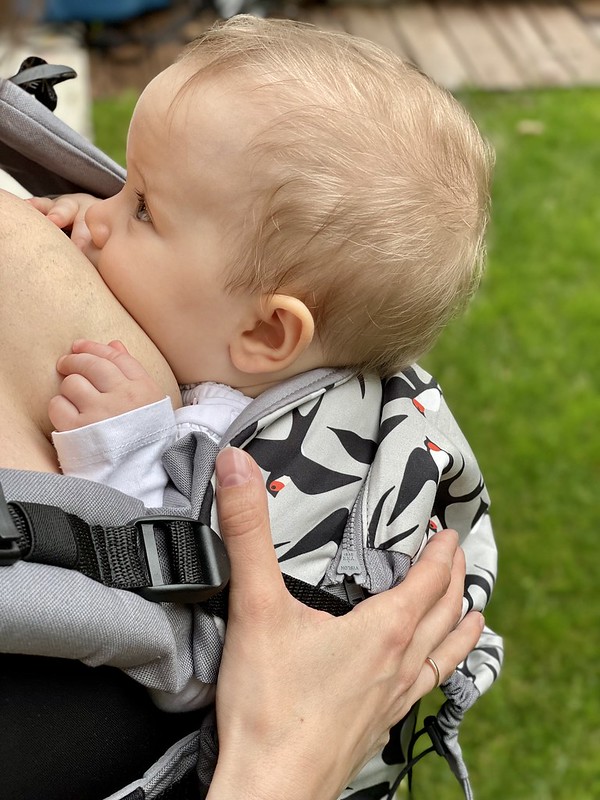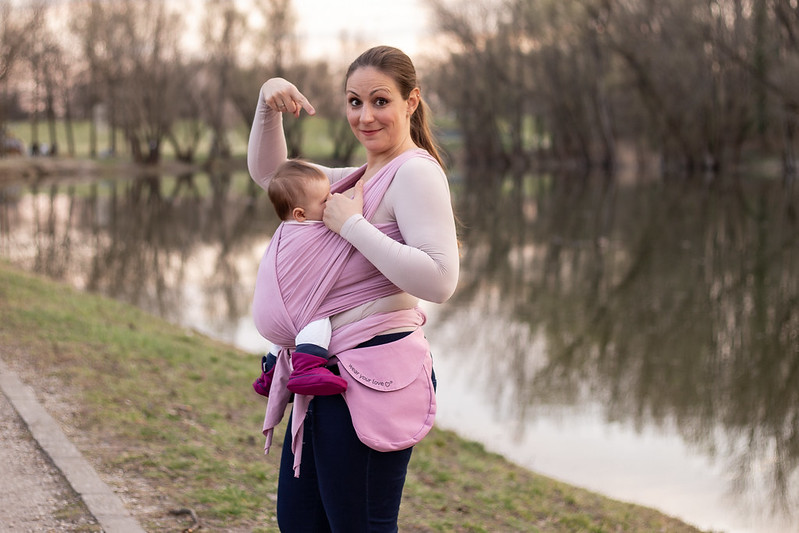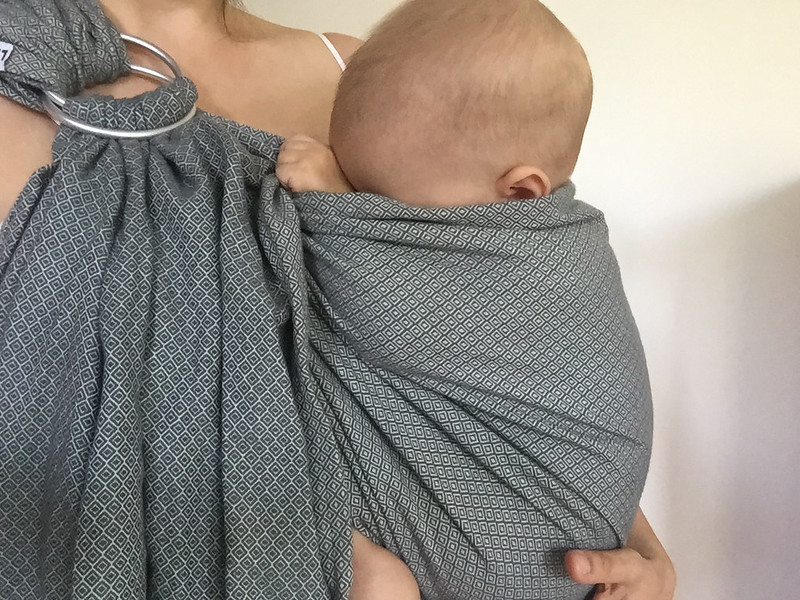The idea of breastfeeding in baby carriers can be really enticing if we’re nurturing our baby with breast milk. There are moms who occasionally turn to carriers in situations when they have urgent matters to attend to, while others use them regularly and as a lifestyle choice. In either case, the question may arise of how to satisfy their baby’s other needs, and it seems a straightforward option if they are already close to the chest.
However, breastfeeding while carrying – and this cannot be stressed enough – is mostly a matter of breastfeeding technique. It’s a technique for which there is no established practice, since every baby and every breast is different. There are no dedicated breastfeeding ties with wraps, because the primary purpose of these tools is baby carrying. If someone is able to breastfeed while carrying, it can be done in any carrier.
What is needed in order to breastfeed your baby in a baby carrier?
From the baby’s perspective, proper sucking technique is crucial, meaning they must be able to create a vacuum with their lips and maintain it. It is essential that they also keep their head stable at the same time. The tone and size of the mother’s breast are also important, as breasts that are too hard or disproportionately large compared to the baby’s head are much more difficult to latch onto.
We have compiled the following safety fundamentals and will also show a few tricks. The right carrier can provide a physiological position for our baby according to their age, size, development, and current needs, meaning:
-
The baby’s torso is vertical
-
Their trunk and spine are fully and stably supported
-
They are in a tie or device appropriate for their stage of movement development.
From the breastfeeding perspective, you should pay attention to the following:
-
Ensure the baby’s torso is vertical so they can swallow without obstruction
-
Allow their head to move freely so they can regulate the flow of milk
-
Provide point-to-point support for their torso so that they don’t have to hold themselves up with their own strength.
In wraps, loosening the tie at the front and hip and sliding the baby down can allow access to the breast; naturally, the tie then needs to be tightened securely in this position. In buckle carriers, the baby can be assisted in the same way by loosening the ladder buckle between the shoulder straps and the body of the carrier if it’s not completely let out during the original setup. If you’re planning to breastfeed, it’s worth loosening the underarm section of the shoulder straps so you can also let out some of the upper straps as needed. In the case of the Lili-Tai, a babywearing position can be formed by loosening the waist belt and retightening the shoulder straps.

Although it might occur to you that you can help the baby’s head to the breast by laying them on their side, this position involves loosening the tie (which prevents retightening later), and neither is the esophagus in the correct alignment, nor can the device support the spine. Depending on the size of the breasts, their weight may also press down on the baby, causing unnecessary strain. Because of all these reasons, the vertical nursing position is essential for safe feeding.
If assistance is needed, there are many carrying and breastfeeding consultants working nationwide who are competent specialists in both fields.
Petra Gerhát
ClauWi-certified babywearing consultant



Leave Comment
You must be logged in to post a comment.